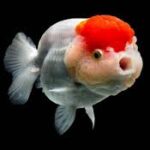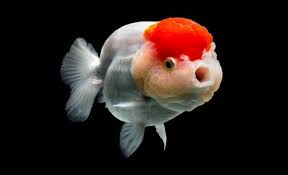Dragons hold an exalted place in Chinese mythology and imperial history, symbolizing power, wisdom, and divine authority. Unlike the fire-breathing monsters of Western myths, Chinese dragons (龙 – lóng) are benevolent celestial beings associated with water, prosperity, and imperial rule. Throughout history, Chinese emperors have claimed descent from dragons, using their imagery to legitimize their divine right to rule.
From the legendary Yellow Emperor (黄帝 – Huángdì) to the Qing Dynasty (清朝 – Qīngcháo), dragons have been woven into the fabric of Chinese civilization, appearing in myths, imperial ceremonies, and governance. This article explores the connection between dragons and Chinese emperors, their symbolism, legendary stories, and their enduring impact on Chinese culture.
The Dragon as the Supreme Imperial Symbol
The Dragon and the Mandate of Heaven
The Mandate of Heaven (天命 – Tiānmìng) is a central concept in Chinese political philosophy, stating that an emperor’s legitimacy comes from divine approval. A just ruler is blessed with the Mandate, while a corrupt ruler risks losing it through natural disasters, uprisings, or foreign invasions.
Dragons were seen as celestial guardians of this mandate, representing the balance between heaven and earth. An emperor who ruled wisely was said to have the favor of the Heavenly Dragon, while one who ruled unjustly would anger the dragons, bringing misfortune to the realm.
The Emperor as the Son of the Dragon
By the Han Dynasty (汉朝 – Hàncháo), the Chinese emperor was officially titled “Son of Heaven” (天子 – Tiānzǐ) and believed to be the earthly embodiment of the dragon’s power. This divine association was reinforced through:
- The Imperial Dragon Robe (龙袍 – Lóngpáo) – A golden silk robe embroidered with a five-clawed dragon, reserved only for the emperor.
- The Forbidden City’s Nine-Dragon Wall (九龙壁 – Jiǔlóng Bì) – A grand structure featuring dragons, symbolizing the emperor’s supreme authority.
- The Dragon Throne (龙椅 – Lóngyǐ) – The emperor’s seat, emphasizing his celestial status.
Through these symbols, the emperor projected his divine right to rule and ensured the loyalty of his subjects.
Legendary Emperors and Their Dragon Connections
1. The Yellow Emperor and the Birth of the Dragon Lineage
The Yellow Emperor (黄帝 – Huángdì) is one of the most revered figures in Chinese mythology, regarded as the ancestor of all Han Chinese people. According to legend:
- He was conceived by a heavenly dragon and born under miraculous circumstances.
- During his reign, he established writing, medicine, and the calendar, bringing civilization to China.
- At the end of his life, a golden dragon descended from the sky to carry him to immortality, confirming his divine status.
This legend cemented the idea that Chinese emperors were direct descendants of dragons, reinforcing their supernatural legitimacy.
2. Emperor Yu the Great and the Dragon’s Blessing
Yu the Great (大禹 – Dà Yǔ), founder of the Xia Dynasty (夏朝 – Xiàcháo), was another emperor closely linked to dragons. He is best known for controlling the catastrophic floods that plagued China.
According to myths:
- A mystical dragon guided Yu as he redirected rivers and built canals to prevent floods.
- The dragon gifted Yu a magical divine map, helping him shape China’s landscape.
- Yu’s ability to command water, the dragon’s domain, proved he was Heaven’s chosen ruler.
His story strengthened the belief that righteous rulers were aided by dragons, reinforcing the divine connection between emperors and water.
3. The First Emperor, Qin Shi Huang, and the Black Dragon
Qin Shi Huang (秦始皇 – Qín Shǐ Huáng), the first emperor of unified China, had a deep fascination with dragons.
- Legends say that he dreamed of a black dragon before unifying China, interpreting it as a sign of his destiny.
- His imperial standard bore the image of a coiling dragon, representing his absolute authority.
- It is rumored that his tomb, guarded by the Terracotta Army, contains a river of liquid mercury, symbolizing the dragon’s life-giving force.
By associating himself with dragons, Qin Shi Huang reinforced his unparalleled rule over China.
Dragons in Imperial Governance and War
The Dragon as a Protector of the Emperor
Many emperors claimed divine protection from dragons.
- During the Tang Dynasty (唐朝 – Tángcháo), Emperor Taizong (唐太宗) claimed that a celestial dragon shielded him from arrows in battle.
- Ming Dynasty (明朝 – Míngcháo) emperors often prayed to the Dragon Kings for military success and favorable weather.
These myths reinforced the belief that the emperor’s rule was safeguarded by supernatural forces.
The Dragon and Imperial Decrees
Imperial decrees (圣旨 – Shèngzhǐ) were often sealed with dragon insignias, signifying their divine authority. Officials and commoners were expected to:
- Bow before the dragon emblem, as it represented the emperor himself.
- Treat the emperor’s words as law, since they were the dragon’s will.
The dragon’s presence in governance ensured that the emperor’s power was seen as absolute and unquestionable.
The Fall of the Dragon Emperors and the Legacy of the Dragon Symbol
The End of the Dragon Throne
The last emperor of China, Puyi (溥仪 – Pǔyí) of the Qing Dynasty, saw the fall of the Dragon Throne in 1912 with the collapse of the imperial system.
- As China moved toward modernization, the myth of the emperor as a divine dragon faded.
- The Republic of China (中华民国 – Zhōnghuá Mínguó) abandoned imperial dragon symbols, replacing them with nationalist emblems.
However, while emperors no longer rule China, the dragon remains deeply ingrained in Chinese identity.
The Dragon as a National and Cultural Symbol
Today, the dragon is:
- A symbol of Chinese identity – People often call themselves “descendants of the dragon” (龙的传人 – Lóng de chuánrén).
- Used in national events, such as the Dragon Dance (舞龙 – Wǔ Lóng), celebrating prosperity and unity.
- A representation of wisdom and strength, appearing in Chinese art, festivals, and philosophy.
The dragon, once reserved for emperors, now belongs to all Chinese people, embodying their spirit, resilience, and heritage.
Conclusion
From the legendary Yellow Emperor to the fall of the Qing Dynasty, dragons have played a crucial role in shaping the identity and rule of Chinese emperors. They were more than just mythical creatures—they were symbols of divine power, protectors of the empire, and enforcers of cosmic order.
Though China no longer has an emperor, the spirit of the dragon endures, uniting the past with the present. Whether in mythology, history, or modern culture, the dragon remains a powerful emblem of wisdom, strength, and Chinese civilization itself.










